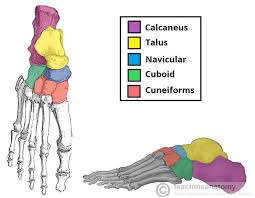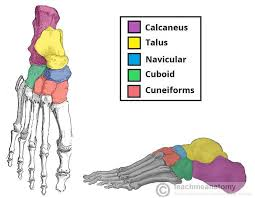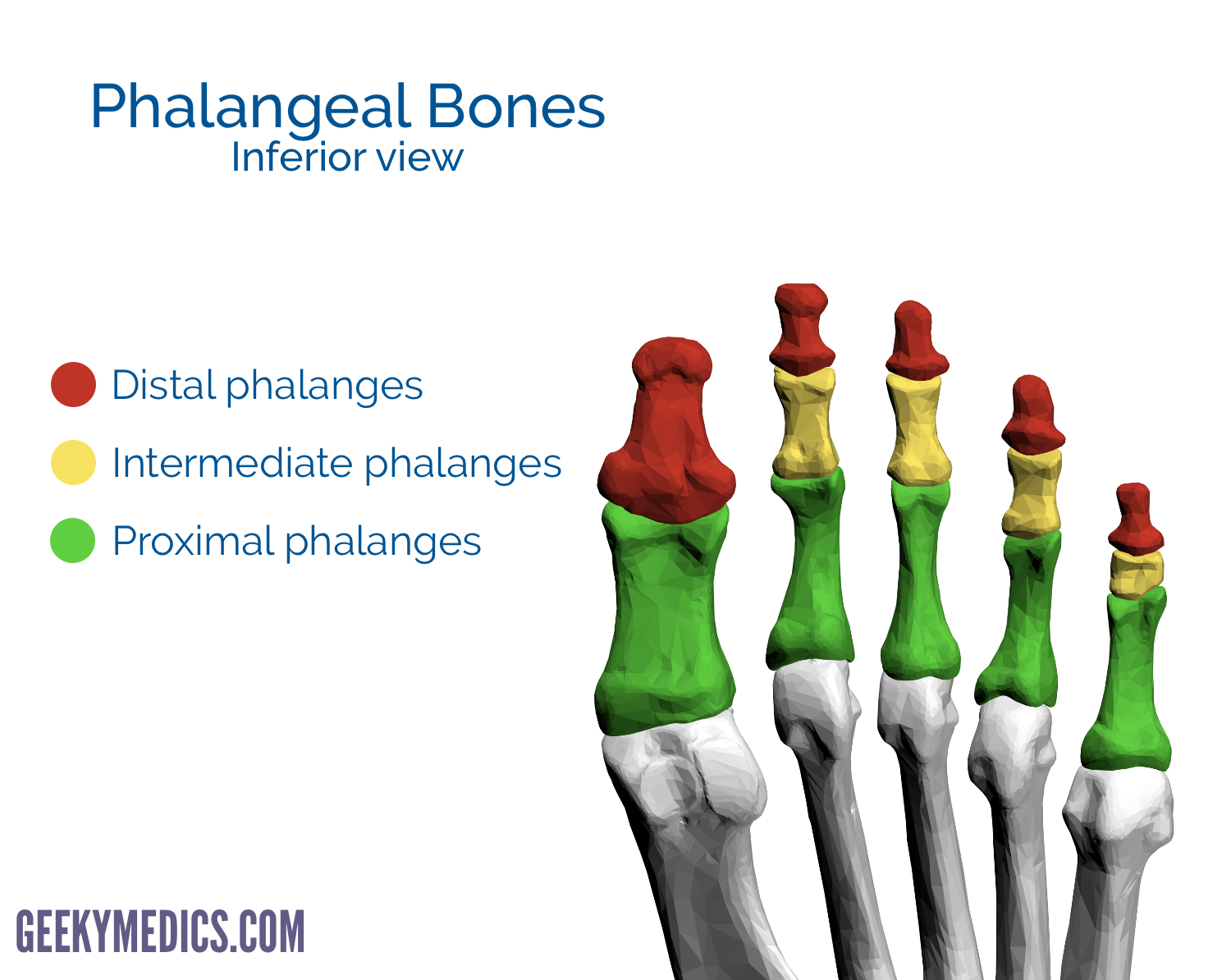Foot
1/4
There's no tags or description
Looks like no tags are added yet.
Name | Mastery | Learn | Test | Matching | Spaced |
|---|
No study sessions yet.
5 Terms
Tarsals
Short bones in the ankle area arranged in 3 groups (proximal, intermediate, distal). Function: Transfer body weight from leg to foot and allow foot movement; muscle attachment sites.

Calcaneus
Largest tarsal bone, forms the heel. Function: Bears body weight during stepping and anchors the Achilles tendon.

Talus
Tarsal bone above the calcaneus that forms the ankle joint. Function: Articulates with tibia and fibula to allow ankle movement.

Metatarsals
Long bones in the middle of the foot, numbered 1–5 from big toe to pinky toe. Function: Transfer weight forward from tarsals to toes and provide muscle attachment.

Phalanges
Toe bones — proximal, middle, and distal phalanges (except big toe). Function: Allow toe movement and serve as muscle attachment points.
The bones of the toes that consist of three sections (proximal, middle, distal) for each toe, except the big toe which has two. They enable movement and balance during walking.
